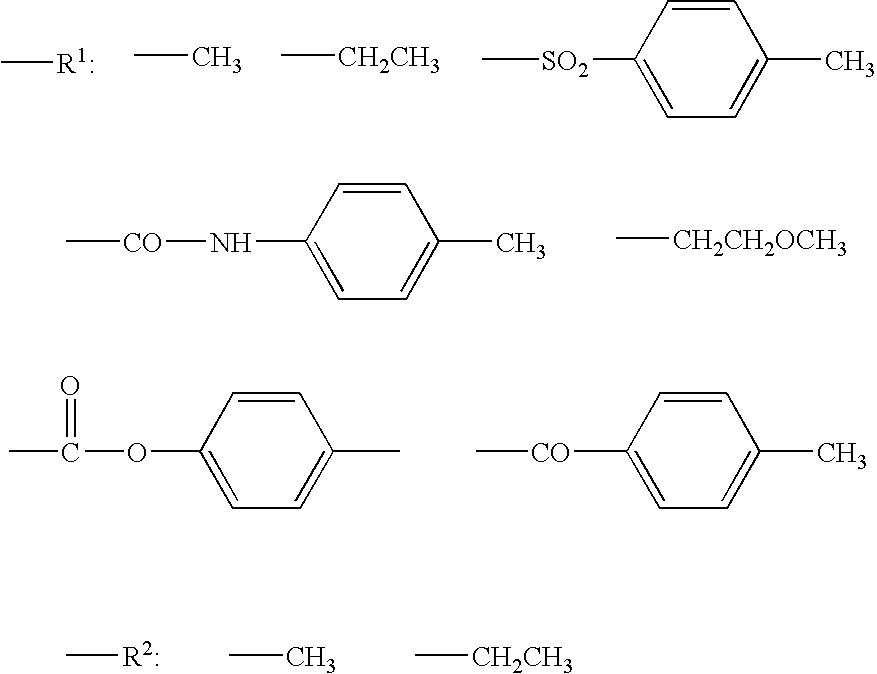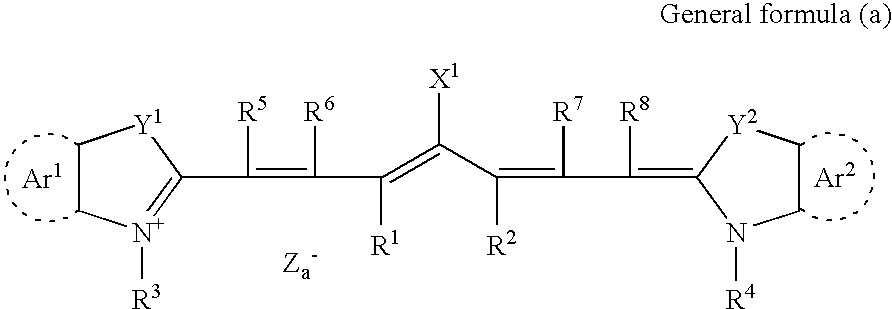Planographic printing plate precursor
- Summary
- Abstract
- Description
- Claims
- Application Information
AI Technical Summary
Benefits of technology
Problems solved by technology
Method used
Image
Examples
synthesis example 1
[0202] Into a 200-ml flask fitted with a stirrer and a heating device, 30 g of methanol and 5 g of N,N-dimethylacetamide were charged. Subsequently, 13.87 g (0.126 mole) of catechol and 13.76 g (0.115 mole) of N,N′-dimethylol urea were added. While the mixture was stirred at room temperature, 6 g of concentrated hydrochloric acid (12 N) was added and then heating was started. When the temperature reached 55° C., the temperature was maintained and the mixture was allowed to react at 55-60° C. for 5 hours. When the reaction solution was poured into 400 ml of water while stirring, a pale yellow solid formed. The solid was separated by filtration and dried. Thus, 20 g of specified phenol resin (1) was obtained. The yield was 72%.
synthesis examples 2-4
[0203] Resins were obtained in the same manner as in Synthesis Example 1 except that one of the starting materials, 13.87 g (0.126 mole) of catechol, was changed to 15.64 g (0.126 mole) of 3-methylcatechol, 15.64 g (0.126 mole) of 4-methylcatechol, and 17.64 g (0.126 mole) of 3-methoxycatechol, respectively. 25 g of specified phenol resin (2) (yield 85%), 23 g of specified phenol resin (3) (yield 78%) and 22 g of specified phenol resin (4) (yield 75%) were respectively obtained.
synthesis example 5
[0204] Into a 500-ml flask fitted with a stirrer and a heating device, 150 g of methanol and 15 g of water were charged. Subsequently, 63.05 g (0.50 mole) of pyrogallol and 50.0 g (0.45 mole) of N,N′-dimethylol urea were added and dissolved while stirring. 7.0 g of concentrated hydrochloric acid (12 N) was added to the mixture and then heating was started. When the temperature reached 55° C., the temperature was maintained and the mixture was allowed to react at 55-60° C. for 7 hours. After completion of the reaction the reaction solution was poured into 1000 ml of water while stirring. The solid formed was separated by filtration and dried. Thus, 89 g of specified phenol resin (5) was obtained. The yield was 79%.
PUM
 Login to View More
Login to View More Abstract
Description
Claims
Application Information
 Login to View More
Login to View More - R&D
- Intellectual Property
- Life Sciences
- Materials
- Tech Scout
- Unparalleled Data Quality
- Higher Quality Content
- 60% Fewer Hallucinations
Browse by: Latest US Patents, China's latest patents, Technical Efficacy Thesaurus, Application Domain, Technology Topic, Popular Technical Reports.
© 2025 PatSnap. All rights reserved.Legal|Privacy policy|Modern Slavery Act Transparency Statement|Sitemap|About US| Contact US: help@patsnap.com



